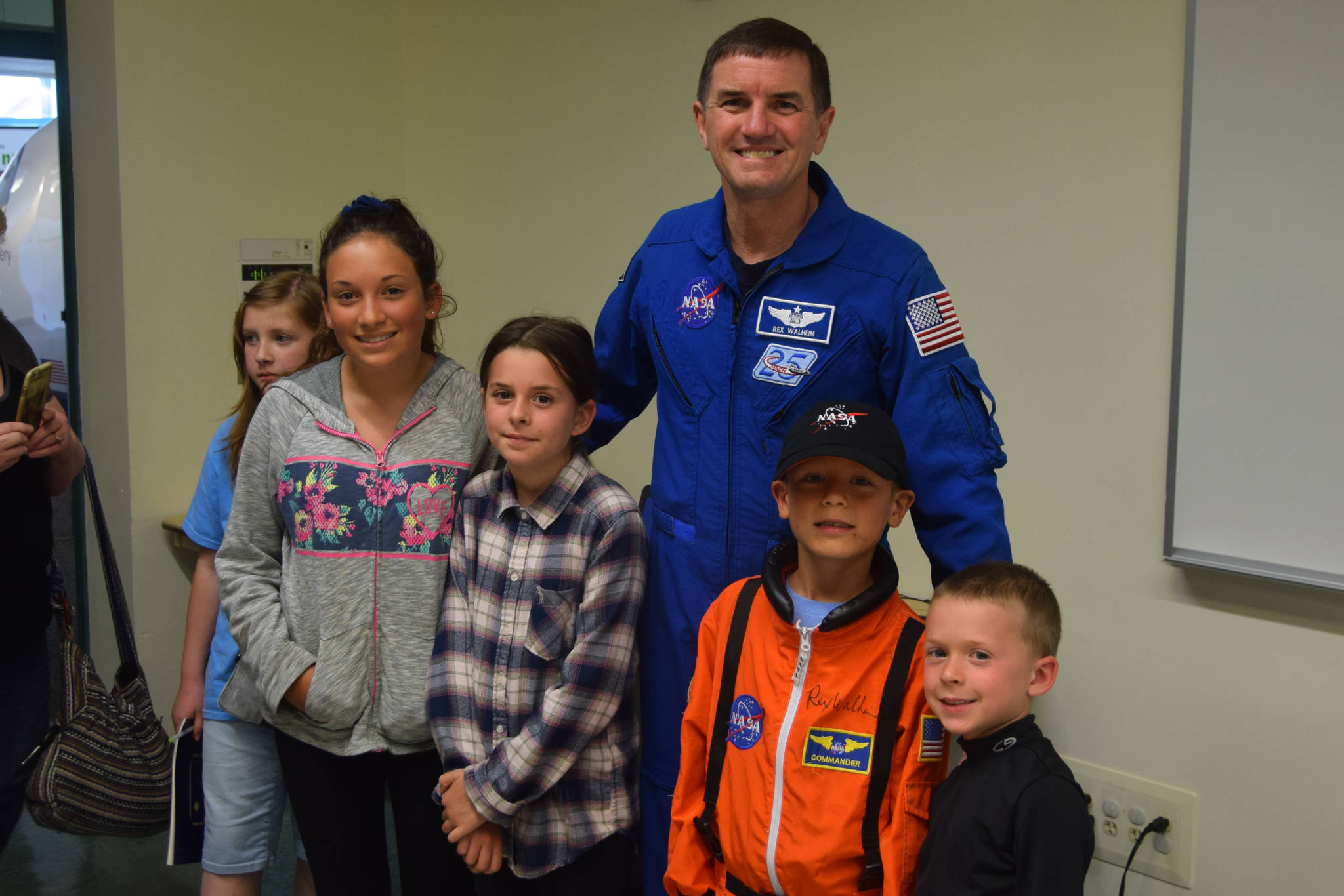On a sunny Thursday next to the softball fields on Main Street, the Kenai Library wrapped up its Summer Reading Program with an afternoon of games, prizes and cupcakes. Since June 6, James Adcox, Bethany McMilin and the other Kenai librarians have been hosting weekly activities and encouraging the local kids to read as much as they can. The annual Summer Reading Program revolves around a different theme every year, and this year the kids explored outer space to discover “A Universe of Stories.”
Adcox said that the summer started off with a lesson in growing food hydroponically, and the kids got the opportunity to grow chocolate mint and strawberries. Every week brought a different activity, whether it was making flying saucers out of pie tins, learning how to draw aliens with Adcox or getting a crash course in physics from Kenai Peninsula College Professor Andreas Veh. There were also periodic puppet shows put on by Adcox and McMilin that showcased the adventures of Eugene and Beatrice as they built a rocket ship and searched the solar system for signs of aliens.
To encourage reading throughout the summer, each child was given the opportunity to pick up a folder with a time log. For every hour spent reading or being read to by a parent, the kids could get a raffle ticket to win one of the many prizes at the end of the summer. More hours of reading meant more tickets, and more tickets meant more of a chance to win a lightsaber or a stomp rocket. Adcox guessed that about 5,000 raffle tickets had been given out, which means that the approximately 550 kids who participated spent, collectively, about 5,000 hours reading.
“The idea is that if we can keep them reading and studying, maybe doing a little math or other activities, when they go to the next grade level the teachers don’t have to backtrack as much,” Adcox said. Adcox provided a suggested reading list, but the kids were free to read anything they wanted.
When asked what his favorite part of the summer reading program, Silas Doss from Kenai had an easy answer.
“The astronaut!” Doss said, and he had the space suit to prove it.
Silas’s mom, Tera Doss, said that her favorite part was how much her kids ended up reading throughout the summer. The Doss kids logged about 40 hours between the four of them.
A week before the summer reading series wrapped up, local kids were treated to a special guest speaker thanks to Claudia Haines from the Homer Library: Astronaut Rex Walheim, who was one of the crew members of the last NASA space shuttle flight.
Walheim visited Kenai as part of the NASA@ My Library program. The visit wasn’t part of the Kenai Summer Reading Program, but tied in well with the theme.
Walheim spoke to an audience of about 200 kids last Thursday at the Challenger Learning Center about his career as an astronaut and answered questions about what it’s like to be in space. Walheim has flown on three space shuttle missions, including the July 8, 2011 flight of the STS-135 Atlantis, which was NASA’s last space shuttle flight.
“There’s nothing like coming down to the Kennedy Space Center with the shuttle on the launchpad, knowing that the shuttle has your stuff packed on it,” Walheim said of the 2011 flight. Walheim said that over a million people were watching the launch from the bridges and beaches of nearby Titusville, Florida.
Walheim and the crew of the Atlantis were on a mission to resupply the International Space Station, and the kids got to see pictures of the crew going on spacewalks and playing with their food in zero gravity as well as views of Earth from the window of the station. After regaling the kids (and adults) with his adventures, Walheim took questions from a very curious audience:
“What does it smell like inside the space station?” one kid asked.
Walheim said that the shuttle was very sterile and smelled like cleaning products, while the station itself had different smells depending on the room.
“Can you make anything in space?” Asked another.
“Yeah, we made the space station in space!” Walheim replied. “We brought the parts up from Earth individually and put them all together in space one piece at a time.”
“Is it dangerous to pass gas in space?” asked one girl.
“You know, I’ve gotten a lot of questions before, but that’s a first,” Walheim said, before going on to explain that the ventilation system on the space station transfers the air from one room to the next, so it can get a little awkward, but not dangerous.
Perhaps most importantly, Walheim laid to rest the contentious question of whether the Earth is flat or round.
“The Earth is round,” Walheim said. “I saw it with my own eyes.”

